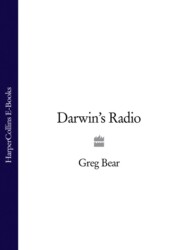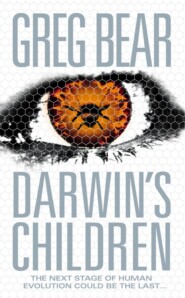По всем вопросам обращайтесь на: info@litportal.ru
(©) 2003-2024.
✖
Vitals
Автор
Год написания книги
2018
Настройки чтения
Размер шрифта
Высота строк
Поля
‘Does he have to come along?’ I asked Shun, waving my hand at Bloom.
‘Yes.’
Bloom lifted his head as if sailing into a wind and winked at me.
‘The specimens may have been in poor condition,’ Betty said as we walked down the hall. ‘We could not tell if they were dead or alive. We did our best, at Owen’s request.’
‘Did Nadia or Jason help carry them over?’
‘No,’ Betty said. ‘Nadia is in police custody now.’
That took me completely by surprise. ‘Why?’
‘Under suspicion of tampering with the food on board the Sea Messenger.’
‘That’s stupid,’ I said.
‘We think so, too.’
‘Tampering how?’ Then I remembered the creamy pudding and its results. ‘Some of them ate a bad dessert, but –’
Bloom interrupted. ‘There was a lot of odd behavior on board the ship, from the very beginning of the cruise. Fights, arguments, irrational statements at odd moments.’
I had spent much of my time in my cabin. Not being very sociable – and having a lot of reading to catch up on.
‘Somebody could have put drugs in the food or water,’ Bloom concluded.
My lab filled two rooms, each about twenty feet square, connected by a white Dutch door. I had ordered special holding tanks for the specimens. Dan and Valerie, my two assistants, were pressurizing the tanks as we walked in.
Dan was a postdoc in oceanic microbiology, a tall, big-shouldered farmboy in appearance but a wizard with equipment. He looked up from the pressure gauge and gave me an unhappy shake of his head.
‘The specimens are pretty traumatized, Dr Cousins,’ he said.
I muttered under my breath.
Valerie stood back, arms folded across her bosom, hands gripping her shoulders, as if contemplating a relative’s coffin. ‘They look dead.’
I moved around Shun and Bloom and fluttered my hands for a moment, probably stuck my tongue between my teeth, trying to figure out where to begin. A steel box full of plastic tubes filled with foot-long core samples from our first and second dives was still on the loading cart. The metal tanks containing the specimens from the third dive had been stacked on the power bed and plugged in. They were still cold and seemed, at a quick glance through the fogged plastic panels, to be carrying Items of Interest.
Still, the damage was likely already done; how to minimize its effects?
‘These creatures didn’t look that alive to begin with,’ I suggested, hoping to break the tension and help Dan and Valerie relax. ‘They’re sedentary.’
Valerie shook her head again, tears welling. I wasn’t lying very effectively.
‘All the specimens are here,’ I said, checking the inventory. ‘In that small tank – the one that’s not at pressure – we have some shovel loads from the sediment that need to be analyzed. I doubt we grabbed any infaunal specimens intact, but we can preserve them and stain for cytoplasm and do some tube counts in the mud. Get some formalin and rose bengal.’
Dan and Valerie focused on the scoop samples and a couple of shallow cores. I wanted them out of the way while I either silently mourned or, less likely, breathed a sigh of relief.
I wiped the panels on the big steel transfer tanks and peered inside with a pocket flashlight. Straight from the briny deeps: shadowy masses that might have been clouds of sediment. Or ruined xenos. I knelt and squinted. Some forms were more than just fragments.
Shun stayed, but Bloom slipped out to answer a phone call.
I checked out the stats in the lab computer and made sure the necessary conditions were being met: water at 3.5 degrees Celsius, high oxygen, 36 percent salinity, metal sulfides in medium traces.
‘It’s at 250 atmospheres,’ Valerie said.
‘If we reduce the pressure, the xenos break down into slippery mush,’ I said to Betty Shun. ‘Their cell membranes – mostly lipids – melt like butter on a hot day. Deep down, where it’s cold and heavy, the membranes are gelid.’
I’d begun a culture of typical bacterial mats even before going out on the Sea Messenger, and now I harvested them from a container in the refrigerator and shot them with a plastic bottle straight into the pump chamber. I watched them spread in pale ribbons into the lab’s central refrigerated tank.
‘Very impressive,’ Betty Shun observed, laying a hand lightly on the big tank’s cold acrylic. ‘I notice you just dumped in the bacteria. Why?’
‘The bacteria adjust quickly. Their desaturase enzymes stop working under pressure, and that pumps up the unsaturated fatty acids in their cell walls, keeping them from getting too inflexible. Our larger specimens aren’t so adaptable.’
I asked Dan to help me connect the first transfer vessel to the big lab tank. We carried it to the worktable and connected it to the delivery chute, making sure the lock seals were tight. I checked the pressure – the vessel had lost about three atmospheres – and I dropped the pressure on the lab tank to match. Then I opened the inner doors and mixed the waters. Small chunks of sandy, dirty jelly floated past.
Like the man praying that the bottle falling through the liquor store bag was vermouth, not gin, I hoped these fragments were common xenos and not our fancy Vendobionts.
‘It’s soup,’ Dan said.
I looked accusingly at Shun. ‘I should have moved them myself.’ She did not react. No doubt she had dealt with personalities fiercer than mine.
I tilted the plastic baffle inside the transfer tank and gently encouraged more contents to drift past the small acrylic port. Dan switched on the main video camera and turned the monitor so I could see.
A frond undulated in the junction between the two tanks, still tinged with yellow.
‘Alive?’ Valerie asked.
‘Probably not. At least the cells haven’t ruptured,’ I said. ‘Let’s salvage what we can.’
Bloom came back and posted himself out of the way, in a corner.
Eight hours passed. I can always lose myself in lab work. I become something lovely and serene, a disembodied Spirit of Science. Tech Zombie, Julia once called me. I don’t even need coffee – there’s something about discovery that pumps me full of my own natural caffeine.
Shun was more patient than I expected – not that I paid her much attention for the first seven hours – but Bloom began to fidget after two, pace after three, and made his excuses after three and a half and stepped out once more.
We had our work cut out for us. These celebrity living fossils were dying or dead, and all their secrets were fading with them. We had to move fast.
First, I performed triage and used the manipulator to gently push fragments and clearly defunct organisms back into a specially prepared transfer tank. I set Valerie to doing proteomics on a few cc’s of mush that I could not otherwise identify. That occupied her for several hours. She used the Applara Proteomizer – a machine the size of a large bread box, capable of doing whole protein analysis at the rate of five hundred amino acid components per minute.
I doubted these critters used more than a few thousand proteins. Your average protein is about a thousand amino acids long. In a few hours, we had a first-order list of the proteins in the mush, and some hints as to the kind of genes and byproducts we would find when we ran the nucleic acids through a sequencer.
While Valerie worked, I spent an hour just staring at the intact organisms in the main tank. Shun stood shoulder to shoulder with me during much of that time, but she wisely kept silent.
If I was a flaming and driven Spirit, she was an unobtrusive shade – or the sword-bearing arm of my angel, Montoya. I didn’t care. Nothing scared me more than failure.
The largest of our specimens, the frond, was a rubbery feather with many compressed ribs, its greenish mud color tinged with yellow. It was about twenty centimeters long, ten centimeters across at its widest point, and it looked like a leaf made of bubble wrap.









